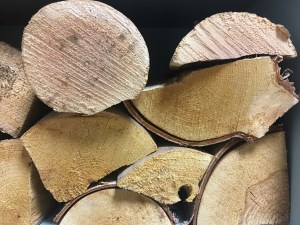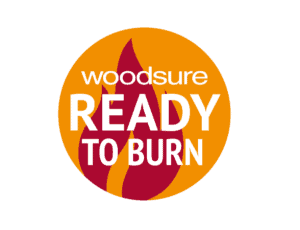 Wood burning stoves account for around 10% of the Government’s carbon reduction targets by 2020. Although ourselves, and other stove manufacturers have developed high efficient stoves, which are ecodesign compliant, it is vital to raise the level of awareness around burning the right quality of fuel among consumers.
Wood burning stoves account for around 10% of the Government’s carbon reduction targets by 2020. Although ourselves, and other stove manufacturers have developed high efficient stoves, which are ecodesign compliant, it is vital to raise the level of awareness around burning the right quality of fuel among consumers.
You may have a highly efficient stove, but using the incorrect fuel, such as unseasoned wood will be completely detrimental to the overall stove performance.
End users have the ultimate power.
The end user of a stove – the consumer, has ultimate power over what is burnt on their stove, and as a result, their actions play a crucial part in the carbon footprint of burning wood. This very fact is a key driving force behind the Ready to Burn initiative.
What is Ready to Burn?
The Ready to Burn initiative is for wood and log producers, having a distinct certification category for dry firewood. Ready to Burn logs are marketed as such, and they are guaranteed to have a moisture content below 25%. This should not only give confidence among consumers that they are buying correctly seasoned wood, the initiative should also help raise awareness of the importance of correctly seasoned wood too. Some stove owners, especially new stove owners may not be aware of the vital importance of correctly seasoned wood.
 Why is wet (Unseasoned wood) so bad?
Why is wet (Unseasoned wood) so bad?
We have spoken many times in the past about the importance of burning correctly seasoned wood. Burning wet or unseasoned wood not only congests the flue, it increases the risk of a chimney fire and carbon monoxide positioning, it also gives an unsightly black soot on the fire window.
In environmental terms burning unseasoned wood also significantly increases the carbon footprint of that appliance.
All the hard work the manufacture has taken to ensure high levels of efficiency could be significantly reduced from using wet wood. The diagram at the end of this article shows the heat output from logs with different moisture levels.
The Rules of Burning Solid Fuel:
1. Allow adequate ventilation – Check the stove requirements and ensure existing vents are not covered or blocked.
2. Sweeping and cleaning – The ash pan on a multi-fuel stove should be cleaned each day of use. Boiler flues once a week. The throat plate of a fire should be removed and cleaned fully every month when in use. As mentioned the chimney should be swept at least twice a year.
3. The right fuel – Only use well seasoned wood with a moisture content below 25%. If you are using coal ensure the coal is from an approved coal merchant. You will be able to find an approved coal merchant from the Coal Merchants Federation.
You can learn more about Ready to Burn here









